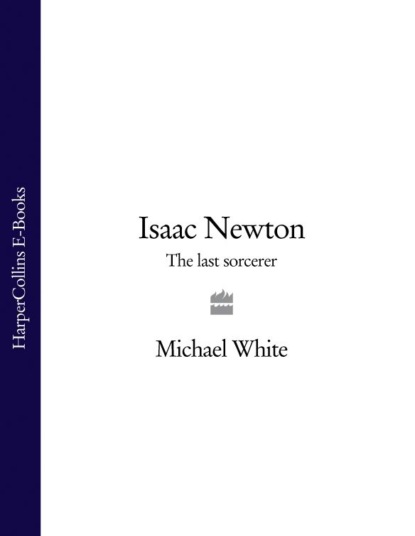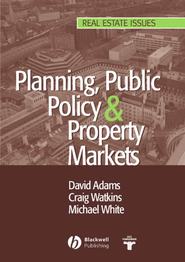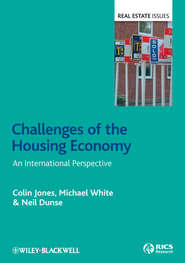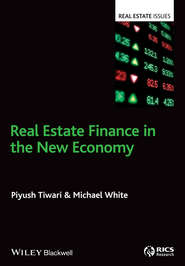По всем вопросам обращайтесь на: info@litportal.ru
(©) 2003-2024.
✖
Isaac Newton: The Last Sorcerer
Настройки чтения
Размер шрифта
Высота строк
Поля
He was able to calculate the force with which the ball struck one of the points of the circle (say, A), and by multiplying this by four (for the sum of the sides of the square) he arrived at a value for the force exerted by the ball in one circuit around the square. But a square is a poor approximation to a circle, and to arrive at closer values for the force the object would exert if it was travelling in circular motion Newton imagined polygons with increasing numbers of sides inscribed in the circle. The more sides the polygon possessed, the closer it came to describing the circle.
Using principles derived from his own recent mathematical developments, he eventually obtained a value for the force exerted by an object completing a single truly circular revolution.
From this calculation he could determine the force with which an object travelling in circular motion pulls away from the centre of the circle and hence the relationship between the force and the size of the circle (or orbit). Applying this to rotation of planets around the Sun, he concluded that ‘the endeavour to recede from the Sun will
Figures 4 and 5.
be reciprocally as the squares of their distances from the Sun’.
(#litres_trial_promo)
(#litres_trial_promo)
This means that the distance and the force experienced by a planet receding from the Sun (or the Moon from the Earth) are related by an inverse square relationship. In other words, if planet A orbits the Sun at a certain distance, another planet B (of equal mass) orbiting at twice the distance will experience a receding force one quarter the value of planet A. If another planet of equal mass, planet C, orbits at a distance three times greater than A it will experience a receding force only one ninth the size of the force experienced by planet A.
In keeping with his lifelong habit of working with whatever materials were at hand, Newton began this thought process on the back of an old lease his mother had used some time earlier.
(#litres_trial_promo) Surviving to this day, the piece of parchment shows a muddled collection of jottings and calculations which, although describing work that eventually led to a law of gravitation, at this stage (1666) merely illustrate his contention that planets experience a receding force from the Sun governed by an inverse square relationship. It was only later that Newton was able to equate this receding force with a force pulling planets towards the Sun and to realise that this pulling force is also governed by the same inverse square law.
Yet the thought that there existed an equal and opposite force which countered the receding force could not have been far from his thoughts – not least because of the familiar example of the stone on a string. And indeed, later in life, Newton dated his realisation of a force of gravity (the force pulling a planet towards the Sun) also acting by the inverse square law to the same time as he had conceived how the receding force could be calculated.
Just before he died, Newton wrote of the dawning of the idea in a letter to the Huguenot scholar Pierre Des Maizeaux:
I began to think of gravity extending to the orb of the Moon & having found out how to estimate the force with which a globe revolving within a sphere presses the surface of the sphere from Kepler’s rule of the periodical times of the planets being in sesquialterate [3:2] proportion of their distances from the centres of their orbs, I deduced the forces which keep the planets in their orbs must be reciprocally as the squares of their distances from the centres about which they revolve.
(#litres_trial_promo)
It is implicit here that the notion of an inward pulling force was in place at the time when he elucidated the magnitude of the receding force, but there is some debate about when this step really was made. There was a series of calculations made both on the lease document and in other documents written in Latin and almost certainly composed no earlier than 1667. (We know this because Newton never wrote in Latin before his return to Cambridge in 1667.) Together, these documents show a step-by-step development of the idea of both forces operating by the inverse square law. What is certain is that it was sometime before 1667 when Newton applied his method of determining the receding force to the case of the Moon’s passage around the Earth.
The calculation was actually a very simple one. In order to work out the strength of the receding force of the Moon by his newly devised method, Newton needed to know the period of one revolution of the satellite. This was readily available from the work of contemporary astronomers: 27 days 8 hours. He also needed to know the distance between the Moon and the Earth, and the best estimate for this at the time was that the distance to the Moon was sixty times the Earth’s radius. Unfortunately, however, the best figure then known for the radius of the Earth, based upon a figure calculated by Galileo, was inaccurate – 3,500 miles (over 400 miles too small). Consequently, the figure Newton obtained for the receding force experienced by the Moon was incorrect and did not demonstrate the inverse square relationship accurately.
Disheartened and exhausted by the effort, Newton abandoned the idea for several years, concluding that he had oversimplified the matter and that there must be some other force, perhaps related to Descartes’s vortex theory, that could explain planetary dynamics – something he had overlooked. It was not until 1685, when he was preparing the Principia, that he finally used a more accurate figure for the Earth’s radius (found by a Frenchman, Jean Picard, some years earlier) and consequently found that the inverse square relationship worked perfectly.
It is clear from this succession of calculations alone that Newton did not realise the entire theory of gravity in one flash of inspiration. The Woolsthorpe years provided a foundation, both conceptual and mathematical, upon which during the following twenty years he constructed a detailed theory based on both alchemical knowledge and experimental verification. (See Chapters 7 (#litres_trial_promo) and 9 (#litres_trial_promo).) All of these elements were essential. If the mathematics had not been developed during the 1660s, Newton’s intuitive grasp of the nature of planetary motion would have remained little more than a good idea. Without his in-depth knowledge of alchemy (which he practised during the 1670s and ’80s), he would almost certainly never have expanded the limited notion of planetary motion as he saw it in 1665/6 into the grand concepts of universal gravitation, of attraction and repulsion, and of action at a distance. Finally, if the experimental evidence had not been gathered, then Newton’s theories, even if substantiated by mathematics, would not have carried the weight they did in his Principia, nor would they have so readily inspired the practical application of mechanics and the laws of motion which led, a century later, to the Industrial Revolution.
In March 1666 Newton returned to Cambridge briefly, but by June the plague again threatened and he was forced to return to Woolsthorpe. During the summer of that year he decided the time was right for him to claim officially his right to gentleman status, and he attended the Herald’s visitation at Grantham, making the process legal. For the first time he wrote, ‘Isaack Newton of Wolstropp. Gentleman, age 23.’
(#litres_trial_promo)
Although this may have seemed premature, Newton’s credentials were quite sound. Certainly, his father could not have taken the title of gentleman, but Isaac junior was not only related to the lower gentry, via the Ayscoughs on his mother’s side, he was also in line for a substantial inheritance upon Hannah’s death. Above all, he was a scholar – a graduate of Trinity College, Cambridge.
Little is known of this second period in Woolsthorpe, between June 1666 and March the following year. He probably divided his time between studying at home and visiting Babington (who lived close by) and the Clarks in Grantham. It would be fair to assume that Hannah still harboured hopes that his stay would be permanent. But, though Newton could still work efficiently in Woolsthorpe, the rural lifestyle had never suited him and he would have had no intention of remaining away from the university any longer than caution dictated. And by the summer of 1666 one of the factors enabling his return to Cambridge was about to make its mark on history. More than 100 miles away, in London, the Great Fire was about to eradicate the last vestiges of the plague from the capital, and the disease soon began to recede elsewhere.
The university reopened in early 1667 and Newton was able to return to Cambridge and to begin the struggle to obtain both his Master of Arts degree and a guarantee for a future at Trinity – the all-important fellowship.
If fellowships were awarded according to merit, then by any measure Newton would have been worthy of one; but they were not. Indeed, his scientific achievements, even if known to the college authorities, would have had little influence. His success depended more upon available vacancies within the hierarchy and knowing the right people.
The acquisition of a fellowship was of the utmost importance to Newton. Without it, he would have been unable to continue at Cambridge and would perhaps have been forced into obscurity as a farmer or encouraged to accept a rectorship in some isolated rural spot. He had not shone academically, and had not been ‘a face’ around college; nor was he very wealthy. His tutor, Benjamin Pulleyn, had been helpful in securing the first stage of his pupil’s academic ascent and had probably introduced him to Barrow; but, although the Lucasian Professor proved imperative to Newton’s later success, he could provide little help in 1667. Again Newton made use of his association with Humphrey Babington, who in 1667 had been promoted to senior fellow – one of eight men who answered directly to the Master and selected new fellows and minor fellows. But, even with Babington’s help, Newton might still have foundered if it had not been for a series of serendipitous events. Because of the plague, there had been no fellowship elections during 1665 and 1666. Even so, when Newton returned to Trinity in early 1667 there were only nine positions to be filled from a total complement of some sixty academics.
By chance, that year the number of vacancies had been inflated by several retirements and a death occasioned by events which vividly convey the atmosphere of Restoration Trinity. A senior fellow had been recently removed on the grounds of ‘mental aberration’ of some unknown variety, and two other fellows had been forced to retire through injuries sustained after falling down the staircase leading to their rooms while in a drunken stupor. A fourth, the poet Abraham Cowley, had died after catching a fever brought on by a night spent sleeping in a field after a bout of heavy drinking. Luckily for Newton, this created a lengthy enough list to give him an opening.
After a scholar had been accepted as a candidate for fellowship, he underwent a succession of gruelling examinations in order to test his suitability. The exams took place during the last days of September, and, despite the continuing distractions of his extracurricular activities, Newton devoted as much time as he could to his preparation after arriving back at Trinity on 25 March.
The examination consisted of three days of oral questioning in the college chapel, followed on the fourth day by a written paper. On 1 October a tolling bell summoned the candidates to learn their fate before the senior fellows: ‘by the tolling of the little bell at 8 in the morning the seniors are called & the day after at one o’clock to swear them that are chosen’.
(#litres_trial_promo)
With the fellowship came both responsibilities and privileges. The most important benefit was that Newton now had a job for life and could continue to study at his leisure, pursuing whatever academic route he wished. The college provided a stipend of £2 and a small allowance for ceremonial costumes and academic robes. He was also given a room free of charge, and upon passing his Master of Arts examination the following spring he was accepted as a major fellow and was granted an increase in his stipend to £2.13s. 4d. as well as an improved livery allowance of £1.3s. 4d.
(#litres_trial_promo)
Newton was clearly delighted by the turn of events. He had pushed back barriers in science and mathematics, had made truly significant discoveries, had declared his social status as a scholar and a gentleman, and had risen through the ranks of the academic élite. Now he knew he was out of reach of the restraining hands of his past. And, for the only time in his entire life, he let his hair down.
For the following year, as he acquired his MA and rose to the rank of major fellow (in March 1668), he led the life of a comfortably placed and successful young man. Uncharacteristically, he visited taverns with Wickins, played bowls, and cast aside the image of the single-minded Puritan, even recording in his notebook a loss of fifteen shillings playing cards.
(#litres_trial_promo) He paid for his and Wickins’s rooms to be decorated by a professional painter, and bought new furniture, carpets and pictures and a whole wardrobe of expensive clothes.
(#litres_trial_promo)
Because Newton was footing most of the bill, he got to choose the colour scheme and the details of the decoration, revealing a new personality trait – an obsession with the colour crimson. New cushions, chairs, bedspreads and curtains were almost all dominated by crimson. He surrounded himself with the colour, and it was a fixation that persisted into old age. In a list of possessions drawn up by Catherine Conduitt after her uncle’s death, there are recorded ‘a crimson mohair bed complete with case curtains of crimson Harrateen’ and, in the dining-room, ‘a crimson settee’. Other listed items included crimson drapes and valances in the bedroom, a crimson easy chair, and six crimson cushions in the back parlour of the house.
(#litres_trial_promo)
Why Newton was so struck with the colour we will probably never know, but the obsession went back a long way. As a teenager, in 1659 he had recorded in the Morgan Notebook some three dozen recipes for the formulation of coloured dyes, and the vast majority of these were for different shades of red. An example is ‘Take some of the clearest blood of a sheep & put it into a bladder & with a needle prick holes in the bottom of it then hang it up to dry in the sun, & dissolve it in alum water according as you have need.’
(#litres_trial_promo) Newton’s optical experiments are also suggestive of his interest in colour, but the reason for his particular interest in crimson is nowhere explained. It would be easy to draw from this predilection conclusions about his underlying psychological drives – that he was obsessed with the colour of blood, for example – but such ideas contribute little towards a sensible understanding of the man. Rather than revealing any deep insights into his motivations or neuroses, a fascination with crimson probably demonstrates little more than an odd quirk of personality. It is interesting because it shows Newton to have a human side – a weakness for something so materialistic as colourful decorations.
Вы ознакомились с фрагментом книги.
Приобретайте полный текст книги у нашего партнера:
Приобретайте полный текст книги у нашего партнера:









